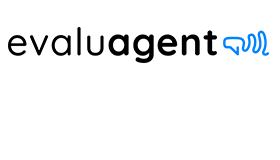Writing for EvaluAgent, Katie Stabler outlines five ways to improve customer experience with conversational analytics.
Imagine a world where EVERYTHING your customers say is accessible to you.
Really think about that for a moment.
Every time an agent hears “thank you so much, you’ve been amazing”, or “wow that’s great, I didn’t realise I could do that online” or even, “it’s about time, this is the third time I’ve tried to get through!” (I didn’t say it would be all positive), you could hear it too.
How amazing would that be?!?!
This brings us to our…
CX Improvement 1: Giving Structure to Unstructured Data
Customers provide feedback within every transaction but the majority of this is lost, never to be heard again, never to be captured, never to be understood and never to be used.
What a waste! And with such a small percentage of customers actually taking the time to provide feedback through the likes of surveys and even complaints, we can’t afford feedback wastage.
With Conversational Analytics our wastage problems are solved! Conversational Analytics can turn all of our natural language into a machine-readable format, this includes voice transcriptions of our calls, and text analytics from emails, text, chat and social media.
But it doesn’t stop there! Not only will Conversational Analytics dish all this newly structured, tasty data up on a plate, but it will also season it to perfection with a sprinkle of sentiment analysis of the language our customers use.
This new, abundance of structured data enables a business to identify where things can be improved much more quickly than ever before.
Let’s take this customer comment from earlier as an example; “it’s about time, this is the third time I’ve tried to get through!”.
With Conversational Analytics we might hear (and capture) a number of customers saying a similar thing, this could indicate an unusual spike in demand or a problem with contact channels, both of which would direct your attention to find and address whatever is creating the issue.
With enhanced issue identification, improved root cause analysis and the subsequent improvements that follow, say hello to issue reduction, increased first-time contact resolution, reduced contact times and cost savings.
CX Improvement 2: Personalisation
The CX world has been banging on about personalisation for quite some time, and for good reason, when it’s done well it can really make your customers feel understood and valued.
Unfortunately, most companies haven’t quite reached the gold standard of personalisation, and everyone’s perspective on personalisation differs.
Usually, in the ‘customer experience’ conversation, personalisation focuses on knowing your customer demographics and using that knowledge to personalise the experience, but let’s mix that up a little!
What if we can improve the customer experience more holistically using personalisation to enhance your customer service touch-points?
Your agents are one of the biggest impacting factors to a good or bad customer experience, they are a catalyst, creating an experience from your process. As such, they need excellent support and they need training.
What if rather than a standard approach to this training you could have a personalised approach? Think about how much more effective targetted training could be? How much wasted time you would save? How happier your agents would feel? How much quicker you will see a direct, positive impact on the customer?
This is entirely within your reach but in order to undertake great agent development personalisation you need data, lots of it, and as per my points above, Conversational Analytics gives you data, lots of it.
Rather than relying only on productivity metrics, customer feedback and a small (often 1%) of call listening, why not benefit from text analysis and the customers sentiment of ALL customer contact?
CX Improvement 3: Compliance
I had to say the ‘C word’ didn’t I? Now if your thinking “why are you talking about compliance in a customer experience article?”
I wouldn’t blame you. Customers aren’t actively thinking about compliance are they? It’s not like Joe calls the contact centre to discuss a policy change and leaves the call impressed that Agent Annie read all of the scripts she was supposed to.
But, the effect that compliance or non-compliance has on the experience is what us CX-ers are interested in, for example, if Agent Annie hadn’t said what she needed to, Joe may have made an uninformed decision which could result in an unhappy Joe later down the line.
Most organisations check how well they adhere to compliance through Quality Assurance (QA), a sample of contact reviews providing a snapshot of performance.
This sampling technique is historic, it was born out of the realism that there simply isn’t enough resource to review every single customer interaction. But it’s 2022 people, and through the magic of Conversational Analytics we can make the reviews of 100% of customer contact a reality!
This enhanced view not only gives you the security of total coverage but it enables you to maximise the effectiveness of your QA team, enabling them to prioritise areas of focus which require the most attention.
CX Improvement 4: Informed People Can Make Better Decisions
“With great power, comes great responsibility”. Spider-man felt it, and you, as the new owner of a power-ball of data, will feel it too.
Our businesses are driven by data. We try to collect and measure as much as we can and although over the years our use of customer data has evolved, action driven by customer insight still tends to be lacking for most businesses.
Afterall, we can’t really ask our customers “how would you rate us on a score of 1 to 10?” everytime we interact with them (if you do, your wasting your time and theirs).
But yes, you guessed it, Conversational Analytics boosts our customer data enormously which means our customer insight can inturn grow, we then have even more responsibility to use it and if we do, we can make better informed decisions.
For example, we may be planning to discontinue a product option because we believe that it’s unpopular with customers due to low sales volumes.
However, with increased insight we can now see that it isn’t unpopular, it’s just hard to navigate to on our website meaning few customers know it’s an option. Rather than discontinuing the product we can now make efforts to make it more visible and accessible.
CX Improvement 5: Customer Effort Score Enhancements
According to research published in The Effortless Experience, 96% of customers who found it a high effort to interact with a business became increasingly disloyal, and as most of us want our customers to stick around, we should be making it as easy for them to do business with us as possible.
But you’re in luck, excellent Customer Effort Scores are even more attainable through the use of Conversational Analytics, as EVERYTHING we’ve talked about (utilising increased structured data in experience design, personalise agent training, improved compliance and customer-driven decisions) will all result in your customer having to expend less effort to interact with you (engaging with you should be a doddle).
Talking about great customer experience is easy but delivering a great customer experience, consistently, is somewhat harder.
Conversational Analytics offers us easily implementable, amazing technology which can be a game-changer for the experience we deliver, so, if you’re not using Conversational Analytics yet, why not?
This blog post has been re-published by kind permission of EvaluAgent – View the Original Article
For more information about EvaluAgent - visit the EvaluAgent Website
Call Centre Helper is not responsible for the content of these guest blog posts. The opinions expressed in this article are those of the author, and do not necessarily reflect those of Call Centre Helper.
Author: EvaluAgent
Published On: 6th Sep 2022 - Last modified: 15th Nov 2023
Read more about - Guest Blogs, EvaluAgent, Katie Stabler






 EvaluAgent provide software and services that help contact centres engage and motivate their staff to deliver great customer experiences.
EvaluAgent provide software and services that help contact centres engage and motivate their staff to deliver great customer experiences. 








